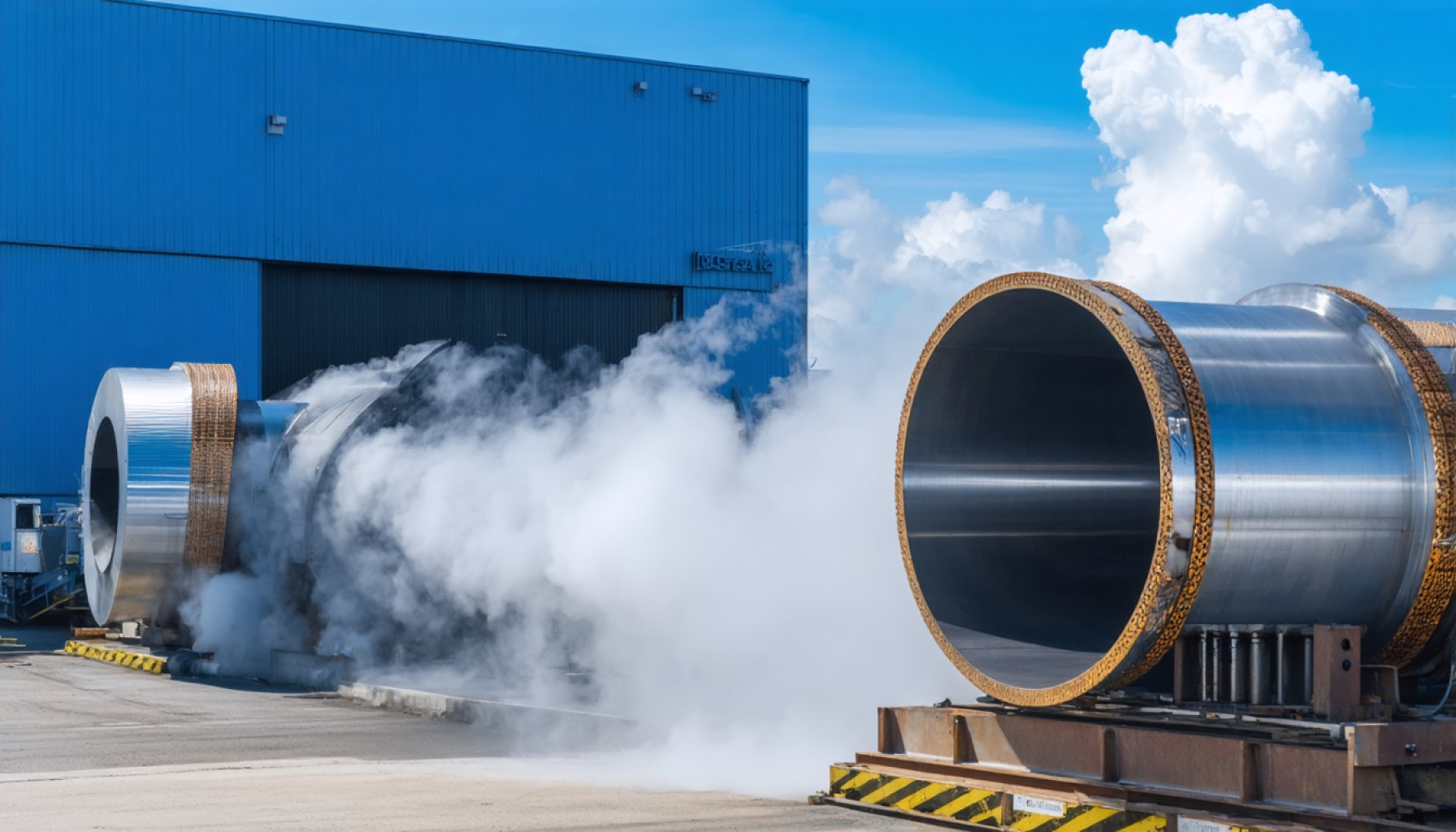- Salzgitter initiates a transformative leap in green steel manufacturing with a 100MW electrolyser facility in Germany.
- The innovative project is set to significantly reduce the steel industry’s carbon footprint by 2026.
- HydrogenPro alkaline electrolysers will produce green hydrogen, aiming to replace coking coal entirely in steel production.
- Engineering firm Andritz has been entrusted with implementing this sustainable approach.
- Projected carbon emission reductions could reach up to 95%, utilizing direct reduced iron and electric arc furnaces.
- This initiative represents a synthesis of traditional steelmaking and advanced environmental strategies.
- Salzgitter exemplifies the potential for sustainable progress and industrial renewal.
Amidst the industrial echoes of Germany’s historic steel corridors, a groundbreaking transformation unfolds. Salzgitter’s latest endeavor—a colossal 100MW electrolyser facility—ushers in a new chapter in green manufacturing. Nestled within the Flachstahl expanse, this bold venture heralds the dawn of a cleaner steel production process, poised to address one of the sector’s most pressing challenges: its hefty carbon footprint.
With the installation contract awarded to engineering powerhouse Andritz, the scene is set for an ambitious journey towards sustainability. By 2026, banks of shimmering HydrogenPro alkaline electrolysers will hum with activity, converting water into something more than a simple compound; into green hydrogen, the lifeblood for the steel giant’s greener ambitions.
This hydrogen won’t just be a replacement but a revolution. It promises to sideline coking coal, traditionally the backbone of steelmaking, in favor of a process where direct reduced iron mingles with scrap steel beneath the fierce pressures of electric arc furnaces. Such innovative alchemy could slash carbon emissions by up to a staggering 95%.
The project stands as an emblem of industrial renewal, weaving together the threads of traditional engineering with cutting-edge environmental consciousness. It’s a vision where gleaming steel beams no longer bear the burden of CO2 but shine as testaments to what’s possible with human ingenuity and a commitment to the planet.
The takeaway here is both clear and inspiring: the path to a sustainable future doesn’t start at the end of the assembly line; it begins in the fires of human innovation. With Salzgitter leading the charge, the steel industry edges closer to a future where progress and preservation go hand in hand.
It’s Not Just Steel: Discover How Green Technology is Revolutionizing German Industry
How-To Steps & Life Hacks: Transitioning to Green Steel Production
1. Conduct Comprehensive Audits: Begin by assessing current carbon outputs of existing manufacturing processes. Understanding baseline emissions is crucial for planning reductions.
2. Select Suitable Electrolysis Technology: Research partners like Andritz and systems such as HydrogenPro’s alkaline electrolysers, renowned for large-scale hydrogen production.
3. Integrate with Current Systems: Plan the integration of electrolysers with existing infrastructure, such as direct reduced iron (DRI) and electric arc furnaces (EAF).
4. Develop Training Programs: Retrain the workforce to handle new technologies and safety protocols involved with handling hydrogen.
5. Monitor and Adjust: Constantly monitor the new system’s performance and make necessary adjustments to improve efficiency and further reduce emissions.
Real-World Use Cases & Market Trends
Germany’s move toward green steel stems from both environmental responsibility and market foresight. As the European Union enforces stricter carbon taxes, green methods could provide Salzgitter and similar companies a competitive edge. Other notable steelmakers in the EU are expected to follow suit, creating a ripple effect across the global industry.
Industry Trends & Market Forecasts
According to a report by MarketsandMarkets, the green hydrogen market is projected to reach USD 9.83 billion by 2028, growing at a CAGR of 14.13% from 2022. Initiatives like Salzgitter’s electrolyser plant are pivotal for such growth, especially within high-emission sectors like steel production.
Controversies & Limitations
One limitation of transitioning to hydrogen-based steel manufacturing is its current dependency on fossil fuels to produce hydrogen, known as “grey hydrogen.” The transition relies on the scalability of truly “green hydrogen” from renewable sources. Moreover, the high initial setup costs deter some firms despite the long-term environmental benefits.
Features, Specs & Pricing
The planned electrolyser facility in Salzgitter will harness HydrogenPro’s highly efficient alkaline electrolyser technology. Alkaline electrolysers typically boast efficiency rates between 65-70% and can handle large-scale production needs. However, pricing details for such massive installations vary as they depend on scale, location, and technological customization.
Security & Sustainability
From a security perspective, hydrogen’s high flammability necessitates strict safety standards. However, sustainable benefits are substantial; hydrogen’s only emission is water vapor, drastically reducing the ecological footprint compared with traditional coal-based processes.
Insights & Predictions
With environmental regulations tightening and public awareness rising, adopting green steel technology is not just a sustainable choice but a business imperative. In the next decade, companies that transition early are likely to dominate the market, setting new standards and encouraging widespread adoption.
Tutorials & Compatibility
– Hydrogen Compatibility: Electric arc furnaces must be adapted to handle hydrogen-based processes, including safety retrofits.
– Employee Training: Offer workshops about hydrogen safety and process management, as expertise in sustainable technologies becomes increasingly valuable.
Pros & Cons Overview
Pros:
– Significant reduction (~95%) in carbon emissions.
– Future-proofing against regulatory changes.
– Enhanced company image and marketability.
Cons:
– High initial costs.
– Dependence on renewable energy grids.
– Risk associated with hydrogen handling and storage.
Actionable Recommendations
1. Explore Partnerships: Smaller firms should collaborate with established green tech companies to share resources and expertise.
2. Monitor Trends: Keep abreast of regulatory changes and technological advancements to stay competitive.
3. Invest in Training: Focus on continuous skill development to maintain a workforce that’s ready for future demands.
For more information and industry insights, visit HydrogenPro and Andritz. These resources can provide further guidance on transitioning to green technologies in steel manufacturing.


